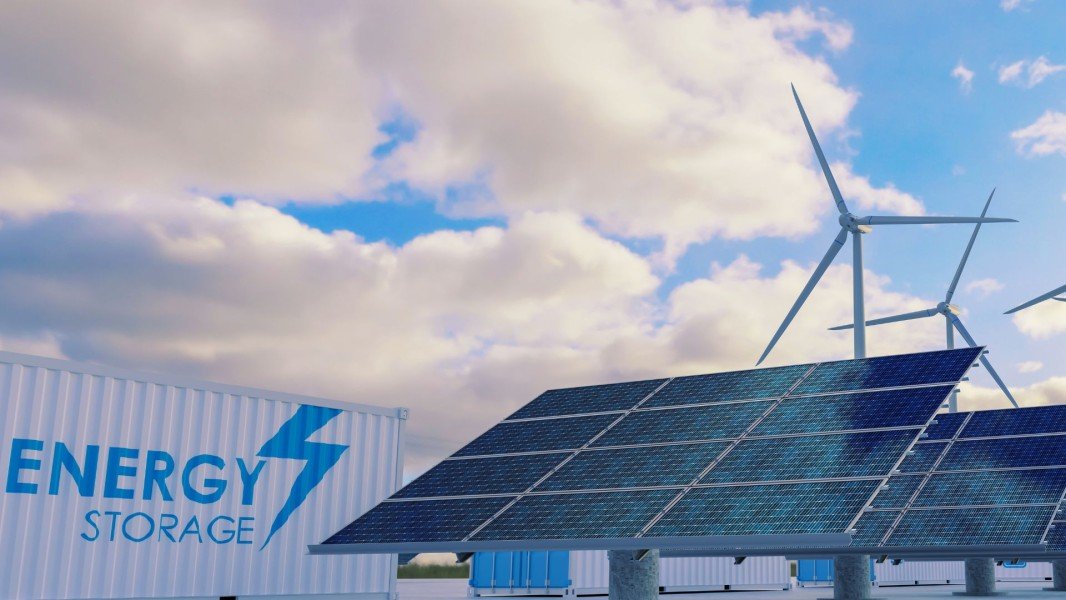
The following is a contributed article by Will Gorman, a graduate student researcher in the Electricity Markets and Policy Department at Lawrence Berkeley National Laboratory.
Developers are increasingly adding batteries to new renewable power projects, to make “hybrid” power plants that can deliver power more consistently, and at higher-value times.
While wind and solar resources are location-specific, batteries can go practically anywhere — including in pockets of the grid where storage adds a lot of value.
But our team at Berkeley Lab wanted to know which is better — putting batteries with the generator at hybrid plants or putting them where they deliver the highest value to the grid?
Generation + Storage
The rapid growth of solar and wind is having a growing effect on grid operations and on the value of wholesale power by the time of day and location. California’s solar-driven “duck curve” is the most prominent example, as solar generation dominates the market during the day but fades as the sun goes down.
Developers are adding batteries to their solar projects to shift generation into the evening, to capture higher power prices during the “head of the duck.” Wind projects too can use batteries to smooth power output and avoid congestion.
In many cases, the batteries are located with and integrated into the renewable power project, as a hybrid power plant. Wind and solar plants are located to take advantage of strong winds and sunshine, with plentiful land and good grid connections. But batteries can be put practically anywhere, like in high-value locations where they can provide additional values to the local grid, such as voltage support, congestion relief, and resilience. With the right controls, they can also provide system-wide benefits, such as capacity and load following.
We wanted to know where batteries should be located to provide the highest value, and how are developers making the decision. Do hybrid renewable-plus-battery power plants provide more value than independently sited installations?
Value differences
Using wholesale power market prices from 2012—2019 across the seven main U.S. independent system operators (ISOs), a new study compares the market value of hybrid projects to the value of the same generators and batteries deployed separately.
The study finds that adding four-hour duration batteries sized to 50% of the capacity of a wind or solar project raises the value by $3-$22/MWh depending on the year and region, with an average value of $10/MWh. The highest boost occurs in California ($15/MWh), where the value of adding storage to solar rises in tandem with increased solar penetration.
But an even higher value comes from siting the same batteries separately, in a nearby high-value location. This strategy results in higher value than co-located projects in nearly all markets and years, ranging from $2 – $50/MWh, with an average value boost of $12.50/MWh. The highest values are found in constrained regions, like New York’s Long Island, while lower values occur in Texas in certain years of the study period.

Comparison of values for combined and separate projects (Dots represent value for a specific nodal location in the given region and year. Dots above the dashed line indicate higher value for separately-located projects; dots below the line show higher value for combined projects)Permission granted by Lawrence Berkeley National Laboratory
Through a variety of strategies, the value penalty of co-located projects can be reduced, such as by recharging batteries from the grid during low-price hours, or sizing the interconnection capacity so both the generator and the battery can deliver power to the grid at the same time.
Cost differences
Separating generation from storage usually delivers higher value, but it may also deliver higher costs, as a project developer will need multiple sites and grid interconnections, and may lose construction cost savings. While our study does not go in-depth on the cost difference between combined and separated resources, a rough estimate found about $15/MWh in cost savings from using a single location.

The penalty for co-locating generation and storage can be reduced by a variety of strategies, while co-location offers some cost savings and incentives.
Permission granted by Lawrence Berkeley National Laboratory
A big part of the savings is that the federal tax credit for renewable energy production can also be applied to batteries, provided the batteries are directly charged by the renewable generator. The tax credit, worth as much as $10/MWh, can tip the scale toward co-location, making coupled projects more attractive to the developer than separate locations.
Market choices
Developers are increasingly adding storage to generation projects, especially solar. At the end of 2020, 34% of solar and 6% of wind capacity were being developed in the U.S. with co-located batteries.
In the West, 70%-90% of proposed solar is paired with storage, including almost all grid-scale solar projects in California. Almost two-thirds of all grid-connected batteries in California are part of hybrid solar-plus-storage systems, rather than in potentially higher-value locations. In other regions, the share is typically less than 40%.

Share of proposed solar and wind projects with batteries, and share of batteries co-located with wind and solar generation, as of 2020.
As developers and policymakers continue to search for the best way to deploy renewables and storage, this consideration of cost and value will be important. However, the relative benefits and costs can vary by market, by time, and by other factors. Depending on conditions, both separate and hybrid projects can pencil out from a system optimization perspective.






